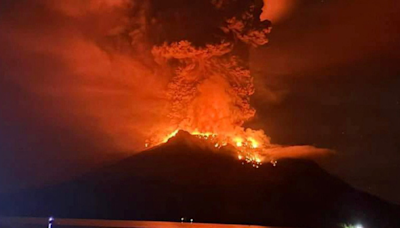Search Results
Jan 15, 2018 · Volcanoes, explained. These fiery peaks have belched up molten rock, hot ash, and gas since Earth formed billions of years ago. By Maya Wei-Haas. January 15, 2018. • 7 min read. Volcanoes are...
Jan 14, 2020 · 193K. 30M views 4 years ago #Volcanoes #NationalGeographic #Educational. About 1,500 active volcanoes can be found around the world. Learn about the major types of volcanoes, the geological...
Jul 7, 2018 · Current Eruptions. Overall, 46 volcanoes were in continuing eruption status as of 2 March 2024. An eruption marked as "continuing" does not always mean persistent daily activity, but indicates at least intermittent eruptive events without a break of 3 months or more. There are typically 40-50 continuing eruptions, and out of those generally ...
Forces of Nature. What is a volcano? A volcano is an opening in the Earth's surface through which lava, volcanic ash, and gases escape. Ancient people believed that volcanoes were under the control of the gods. In fact, the word volcano comes from Vulcan, the Roman god of fire.
A volcano is a vent in Earth's surface where magma, gas, and ash escape. The name is also used for cones of erupted material at the vent. Volcanoes are found on many planets and moons in our solar system. Plate Tectonics and Mount Vesuvius.
Volcanoes are vents in Earth’s crust (or in the crust of another planet or satellite) capable of releasing molten rock ( magma ), hot rock fragments, and hot gases.
Education. About Volcanoes. By Volcano Hazards Program. Volcanoes are openings, or vents where lava, tephra (small rocks), and steam erupt onto the Earth's surface. Volcanic eruptions can last days, months, or even years. What is a volcano? Redoubt volcano with minor ash eruption.


